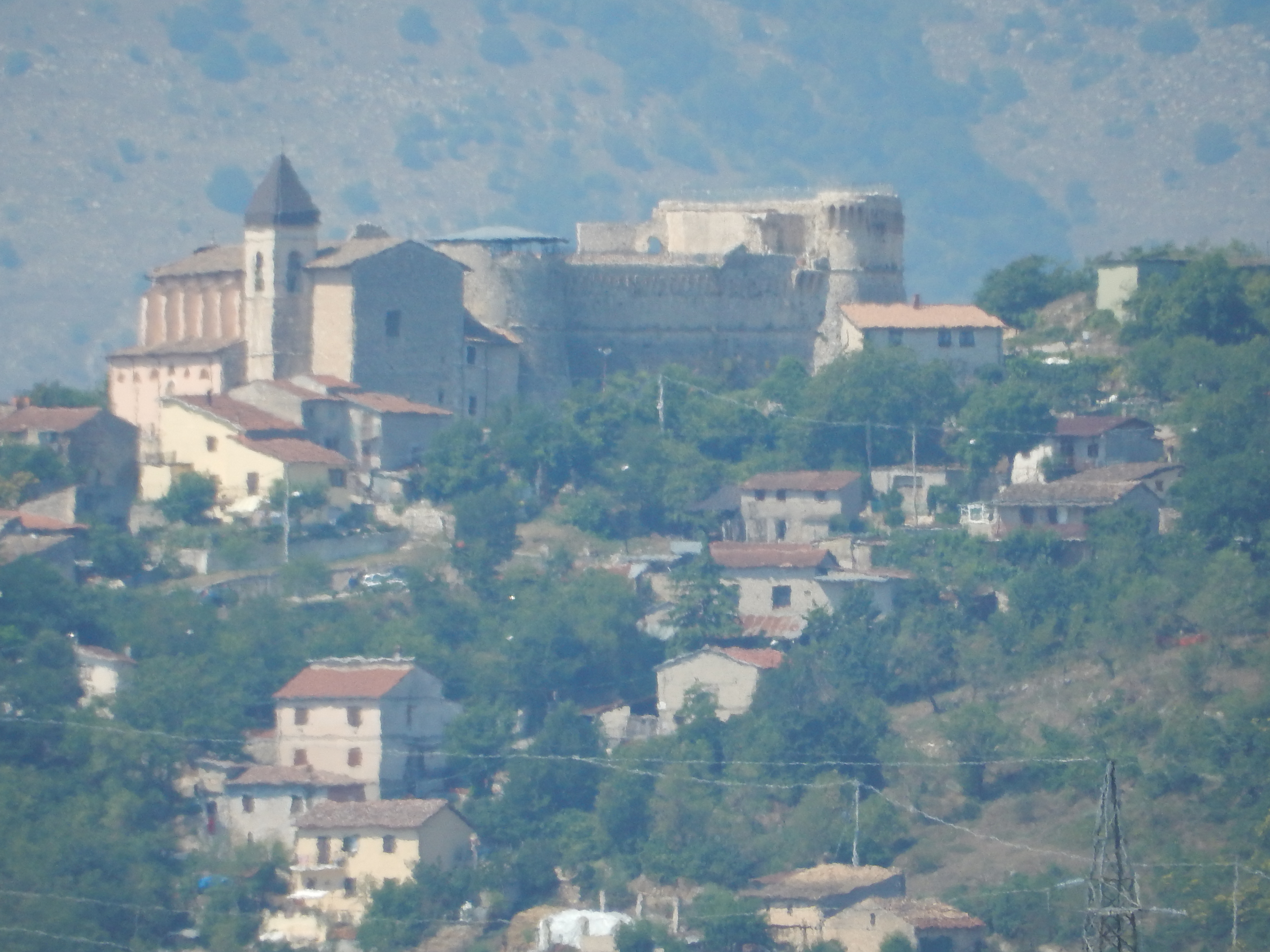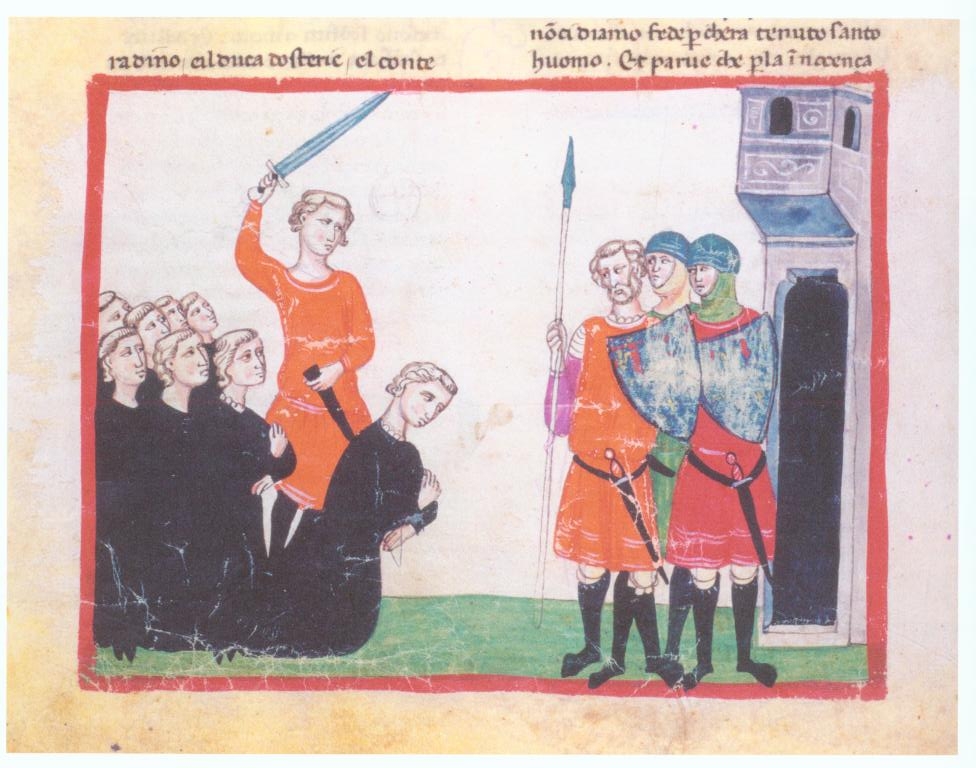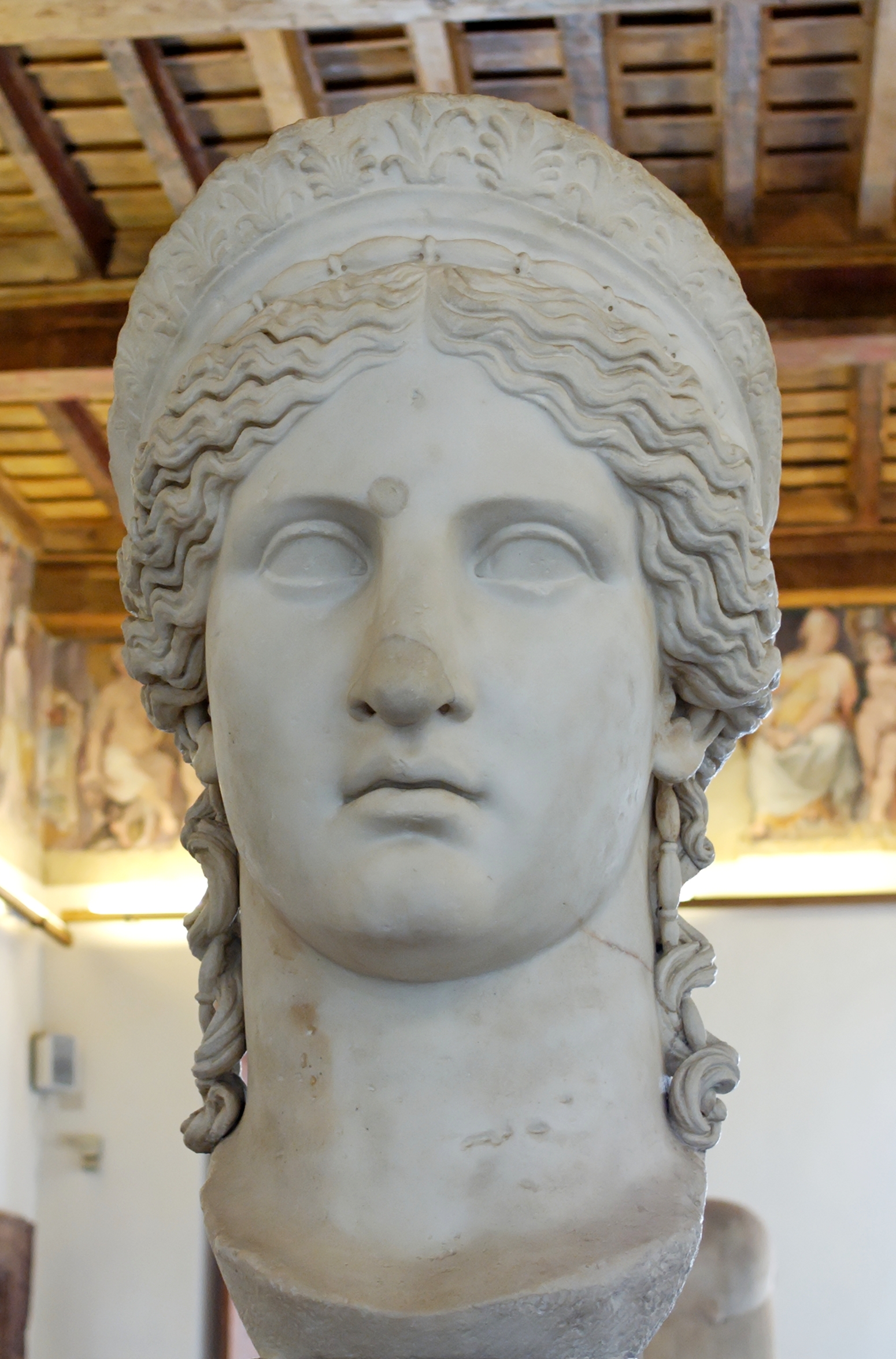|
Piani Palentini
The () are a plateau in upper Marsica, a subregion of Abruzzo, in central Italy. Description The plains, located between a.s.l., are surrounded by mountain reliefs such as those of the Sirente- Velino group, Mount San Nicola, the Mount Bove massif ( Carseolan Mountains), and the Mount Salviano range. Mounts Aurunzo and Girifalco separate the plains from the Nerfa Valley. This plateau is adjacent to the Fucino plain in the east, and to the upper Cicolano valley in the northwest part, falling within the territories of the municipalities of Avezzano, Capistrello, Magliano de' Marsi, Scurcola Marsicana, and Tagliacozzo. The small Terramone depression, situated between the Cappelle dei Marsi and Magliano de' Marsi territories, is part of the area. The plateau is mostly for agricultural use. Origin of the name The origin of the name is not clear. According to one hypothesis, it would be related to Pales, a deity of Roman mythology, protecting shepherds, flocks and livesto ... [...More Info...] [...Related Items...] OR: [Wikipedia] [Google] [Baidu] |
Province Of L'Aquila
The Province of L'Aquila ( it, Provincia dell'Aquila) is the largest, most mountainous and least densely populated province of the Abruzzo region of Central Italy. It comprises about half the landmass of Abruzzo and occupies the western part of the region. It has borders with the provinces of Teramo to the north, Pescara and Chieti to the east, Isernia (in Molise region) to the south and Frosinone, Rome and Rieti (in Lazio region) to the west. Its capital is the city of L'Aquila. The province of L'Aquila includes the highest mountains of the Apennines (Gran Sasso, Maiella and Velino-Sirente), their highest peak, Corno Grande, the high plain of Campo Imperatore, and Europe's southernmost glacier, the Calderone. The province's major rivers are the Aterno-Pescara, Sangro, Liri, Salto, and the Turano; its major lakes are Lago Scanno and Lago Barrea. It once included the largest lake on the Italian peninsula, Lago Fucino, which was drained in one of the 19th century's largest en ... [...More Info...] [...Related Items...] OR: [Wikipedia] [Google] [Baidu] |
Pales
In ancient Roman religion, Pales was a deity of shepherds, flocks and livestock. Regarded as male by some sources and female by others, ''Pales'' can be either singular or plural in Latin, and refers at least once to a pair of deities. Pales' festival, called the Parilia, was celebrated on April 21. Cattle were driven through bonfires on this day. Pales and the Parilia were strictly connected to the foundation of Rome which took place on the day of their festival. Marcus Atilius Regulus built a temple to Pales in Rome following his victory over the Salentini in 267 BC. It is generally thought to have been located on the Palatine Hill, but, being a victory monument, it may have been located on the route of the triumphal procession, either on the Campus Martius or the Aventine Hill. According to the ''Fasti Antiates Maiores'', there was a festival for "the two Pales" (''Palibus duobus'') on July 7, probably to mark the dedication of this temple. Scholarship has suggested the Pal ... [...More Info...] [...Related Items...] OR: [Wikipedia] [Google] [Baidu] |
Tunnels Of Claudius
The Tunnels of Claudius ( it, Cunicoli di Claudio) are a hydraulic work made up of a long underground canal, six inclined service tunnels and thirty-two wells, which Emperor Claudius had built between 41 and 52 AD. to control the variable levels of the Fucine Lake in Abruzzo, thus protecting riparian villages from floods and reclaiming the Fucine lands making them cultivable. Thanks to them, the lake waters flowed out through the belly of Mount Salviano from the Avezzano side along the almost tunnel until they flowed into the Liri River on the opposite side of the mountain, under the old town of Capistrello. The underground canal represents the longest tunnel ever built since ancient times until the inauguration of the Fréjus Rail Tunnel occurring in 1871. With the fall the Roman Empire, and during the Barbarian invasions, the main canal, not maintained anymore, became definitively clogged. Centuries later, starting from 1854, Alessandro Torlonia built the new canal, more than ... [...More Info...] [...Related Items...] OR: [Wikipedia] [Google] [Baidu] |
Lucius Arruntius (consul 6)
Lucius Arruntius (before 27 BC – 37 AD) was a Roman senator praised by the ancient Roman historian Tacitus. He lived throughout most of the reigns of the two first Roman emperors, Augustus and Tiberius. In 6 AD he was appointed consul, and then governor of Hispania Tarraconensis around 25 AD, which he governed ''in absentia'' for over 10 years. Throughout the latter part of his life he was plagued by hostility from the Praetorian Guard prefects, Sejanus and Macro, which culminated in his suicide in 37 AD after being arraigned on a trumped-up charge of irreverence to the then-emperor Tiberius. Early life and family Lucius Arruntius descended from an ancient and noble family and was the son of Lucius Arruntius, a Roman admiral noteworthy for his participation during the Battle of Actium, where he was in command of Augustus' central fleet. Little else is known of the life of Lucius Arruntius before his consulship in 6 AD. Arruntius had an adopted son, Lucius Arruntius Cami ... [...More Info...] [...Related Items...] OR: [Wikipedia] [Google] [Baidu] |
Castello Orsini Di Scurcola
Castello may refer to: Places *Castello, Venice, the largest of the six ''sestieri'' of Venice *''Castello'', the old town center of Giudicato of Cagliari in Sardinia *''Castello'', a neighbourhood in Florence *Castello, Hong Kong, a private housing estate in Hong Kong *A locality in the town of Monteggio in Switzerland * Cittadella (Gozo), a citadel in Gozo, Malta *Short name of Castellón de la Plana, a city in the Valencian Community, Spain Other * Roman Catholic Diocese of Castello, a former diocese based in Venice * Castello (surname) * Castello cheeses See also *Città di Castello, a town in Umbria, Italy * Castell (other) * Castella (other) * Castelli (other) *Castellón (other) Castellón ( ca, Castelló) may refer to: Places * Castellón de la Plana, the capital city of the province of Castellón, in Valencian Community, Spain * Province of Castellón, a province in Valencian Community, Spain * Castelló, formerly ''C ... * Caste ... [...More Info...] [...Related Items...] OR: [Wikipedia] [Google] [Baidu] |
Charles I Of Anjou
Charles I (early 1226/12277 January 1285), commonly called Charles of Anjou, was a member of the royal Capetian dynasty and the founder of the Capetian House of Anjou, second House of Anjou. He was Count of Provence (1246–85) and County of Forcalquier, Forcalquier (1246–48, 1256–85) in the Holy Roman Empire, Count of Anjou and Count of Maine, Maine (1246–85) in France; he was also King of Sicily (1266–85) and Prince of Achaea (1278–85). In 1272, he was proclaimed Kingdom of Albania (medieval), King of Albania, and in 1277 he purchased a claim to the Kingdom of Jerusalem. The youngest son of Louis VIII of France and Blanche of Castile, Charles was destined for a Church career until the early 1240s. He acquired Provence and Forcalquier through his marriage to their heiress, Beatrice of Provence, Beatrice. His attempts to restore central authority brought him into conflict with his mother-in-law, Beatrice of Savoy, and the nobility. Charles received Anjou and Maine from ... [...More Info...] [...Related Items...] OR: [Wikipedia] [Google] [Baidu] |
Kingdom Of Sicily
The Kingdom of Sicily ( la, Regnum Siciliae; it, Regno di Sicilia; scn, Regnu di Sicilia) was a state that existed in the south of the Italian Peninsula and for a time the region of Ifriqiya from its founding by Roger II of Sicily in 1130 until 1816. It was a successor state of the County of Sicily, which had been founded in 1071 during the Norman conquest of the southern peninsula. The island was divided into three regions: Val di Mazara, Val Demone and Val di Noto. In 1282, a revolt against Angevin rule, known as the Sicilian Vespers, threw off Charles of Anjou's rule of the island of Sicily. The Angevins managed to maintain control in the mainland part of the kingdom, which became a separate entity also styled ''Kingdom of Sicily'', although it is commonly referred to as the Kingdom of Naples, after its capital. From 1282 to 1409 the island was ruled by the Spanish Crown of Aragon as an independent kingdom, then it was added permanently to the Crown. After 1302, the isl ... [...More Info...] [...Related Items...] OR: [Wikipedia] [Google] [Baidu] |
Hohenstaufen
The Hohenstaufen dynasty (, , ), also known as the Staufer, was a noble family of unclear origin that rose to rule the Duchy of Swabia from 1079, and to royal rule in the Holy Roman Empire during the Middle Ages from 1138 until 1254. The dynasty's most prominent rulers – Frederick I (1155), Henry VI (1191) and Frederick II (1220) – ascended the imperial throne and also reigned over Italy and Burgundy. The non-contemporary name of 'Hohenstaufen' is derived from the family's Hohenstaufen Castle on the Hohenstaufen mountain at the northern fringes of the Swabian Jura, near the town of Göppingen. Under Hohenstaufen rule, the Holy Roman Empire reached its greatest territorial extent from 1155 to 1268. Name The name Hohenstaufen was first used in the 14th century to distinguish the 'high' (''hohen'') conical hill named Staufen in the Swabian Jura (in the district of Göppingen) from the village of the same name in the valley below. The new name was only applied to the hill ... [...More Info...] [...Related Items...] OR: [Wikipedia] [Google] [Baidu] |
Conradin
Conrad III (25 March 1252 – 29 October 1268), called ''the Younger'' or ''the Boy'', but usually known by the diminutive Conradin (german: link=no, Konradin, it, Corradino), was the last direct heir of the House of Hohenstaufen. He was Duke of Swabia (1254–1268) and nominal King of Jerusalem (1254–1268) and Sicily (1254–1258). After his attempt to reclaim the Kingdom of Sicily for the Hohenstaufen dynasty failed, he was captured and beheaded. Early childhood Conradin was born in Wolfstein, Bavaria, to Conrad IV of Germany and Elisabeth of Bavaria. Though he never succeeded his father as Roman-German king, he was recognized as king of Sicily and Jerusalem by supporters of the Hohenstaufens in 1254. Having lost his father in 1254, he grew up at the court of his uncle and guardian, Louis II, Duke of Bavaria. His guardians were able to hold Swabia for him. Jerusalem was held by a relative from the royal house of Cyprus as regent. In Sicily, his father's half-brother M ... [...More Info...] [...Related Items...] OR: [Wikipedia] [Google] [Baidu] |
Claudius Tunnels
Tiberius Claudius Caesar Augustus Germanicus (; 1 August 10 BC – 13 October AD 54) was the fourth Roman emperor, ruling from AD 41 to 54. A member of the Julio-Claudian dynasty, Claudius was born to Drusus and Antonia Minor at Lugdunum in Roman Gaul, where his father was stationed as a military legate. He was the first Roman emperor to be born outside Italy. Nonetheless, Claudius was an Italian of Sabine origins. As he had a limp and slight deafness due to sickness at a young age, he was ostracized by his family and was excluded from public office until his consulship (which was shared with his nephew, Caligula, in 37). Claudius's infirmity probably saved him from the fate of many other nobles during the purges throughout the reigns of Tiberius and Caligula, as potential enemies did not see him as a serious threat. His survival led to him being declared emperor by the Praetorian Guard after Caligula's assassination, at which point he was the last adult male ... [...More Info...] [...Related Items...] OR: [Wikipedia] [Google] [Baidu] |
Claudius
Tiberius Claudius Caesar Augustus Germanicus (; 1 August 10 BC – 13 October AD 54) was the fourth Roman emperor, ruling from AD 41 to 54. A member of the Julio-Claudian dynasty, Claudius was born to Nero Claudius Drusus, Drusus and Antonia Minor at Lugdunum in Roman Gaul, where his father was stationed as a military legate. He was the first Roman emperor to be born outside Italia (Roman Empire), Italy. Nonetheless, Claudius was an Italian of Sabine origins. As he had a limp and slight deafness due to sickness at a young age, he was ostracized by his family and was excluded from public office until his Roman consul, consulship (which was shared with his nephew, Caligula, in 37). Claudius's infirmity probably saved him from the fate of many other nobles during the purges throughout the reigns of Tiberius and Caligula, as potential enemies did not see him as a serious threat. His survival led to him being declared emperor by the Praetorian Guard after Caligula's a ... [...More Info...] [...Related Items...] OR: [Wikipedia] [Google] [Baidu] |
Centuriation
Centuriation (in Latin ''centuriatio'' or, more usually, ''limitatio''), also known as Roman grid, was a method of land measurement used by the Romans. In many cases land divisions based on the survey formed a field system, often referred to in modern times by the same name. According to O. A. W. Dilke, centuriation combined and developed features of land surveying present in Egypt, Etruria, Greek towns and Greek countryside. Centuriation is characterised by the regular layout of a square grid traced using surveyors' instruments. It may appear in the form of roads, canals and agricultural plots. In some cases these plots, when formed, were allocated to Roman army veterans in a new colony, but they might also be returned to the indigenous inhabitants, as at Orange (France). The study of centuriation is very important for reconstructing landscape history in many former areas of the Roman empire. History The Romans began to use centuriation for the foundation, in the fourth century ... [...More Info...] [...Related Items...] OR: [Wikipedia] [Google] [Baidu] |


%2C_RP-P-1986-363.jpg)







